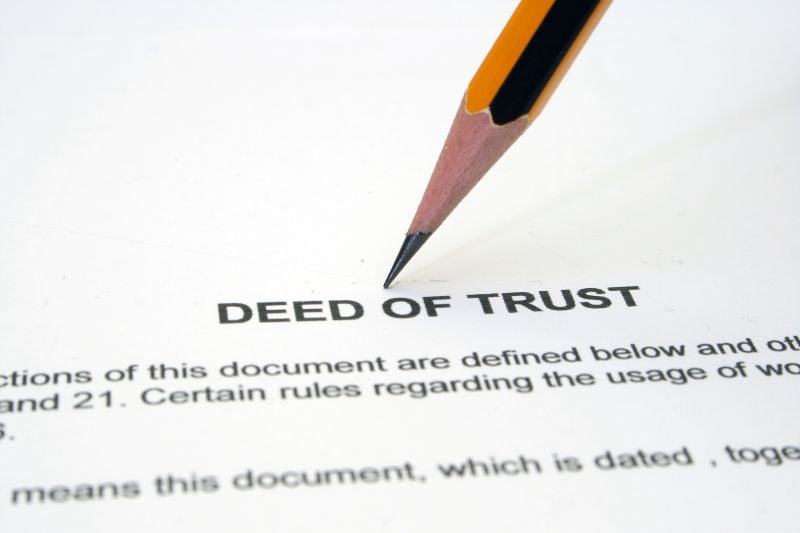Mortgage vs. Deed of Trust: What's the Difference?

Mortgages and deeds of trust are two types of legal documents used when buying and selling real estate, especially when obtaining money from lenders to purchase a property.
Both a mortgage and a deed of trust are necessary, and they serve similar purposes. However, these two legal instruments differ in some key ways—especially in how they work and the legal procedures involved. It’s important for homeowners and lenders to understand how the two differ, so let’s take a closer look at some of the important differences between a mortgage and a deed of trust.
What’s a Mortgage, and How Does It Differ from a Deed of Trust?
A mortgage is essentially a loan agreement between a borrower and a lender. The purpose of a mortgage is to finance a property. With a mortgage, there are typically two parties involved: the borrower (mortgagor) and the lender (mortgagee). Unlike a deed of trust, there is no trustee involved when signing a mortgage; the lender directly holds the lien on the property.
A mortgage requires a promissory note and mortgage document. It’s recorded at the Registry of Deeds in the county where you reside. When signing a mortgage, the borrower of the loan retains the equitable title throughout the entire loan term, while the lender holds the legal title until the loan is repaid in full.
A mortgage generally has fewer administrative costs and fees than a deed of trust. If the borrower defaults, the lender may be required to go through the (often long and complex) judicial foreclosure process to reclaim the property. This may include court proceedings, which can vary from state to state.
What’s a Deed of Trust, and How Does It Differ from a Mortgage?
Unlike a mortgage, which only involves two parties, a deed of trust involves three parties: the borrower, the lender (beneficiary), and the trustee. Like a mortgage, a deed of trust requires a promissory note and is recorded at the registry of deeds in the county where you reside.
Unlike a mortgage, a deed of trust involves a trustee. The trustee holds the legal title on behalf of the beneficiary until the loan is fully repaid, while the beneficiary holds the security interest. This individual has the authority to initiate foreclosure proceedings and sell the property if the borrower defaults.
If the borrower defaults on the loan, a nonjudicial foreclosure process is often carried out, providing quicker recourse for the lender. This process is typically faster and more streamlined than a mortgage foreclosure, but it is still subject to state regulations.
With a deed of trust, foreclosure proceedings also may involve more administrative costs than a mortgage because of the trustee's role in foreclosure.
Mortgage vs. Deed of Trust: Similarities
Now that we’ve got an understanding of what each document is, let’s take a look at some of the similarities between them:
- Loan security: The purpose of both a mortgage and deed of trust is to secure a loan, using the property as collateral. If the borrower fails to repay the loan, the lender can initiate foreclosure proceedings to take possession of the property. They can then sell it to recover any outstanding debt.
- Collateralization: A mortgage and deed of trust both require the borrower to use the property as security for a loan. The property's value will help identify the total amount of the loan and financing terms.
- Legal documents: Both are considered legal documents that are recorded in local public records to verify the lender's claim on the property.
Mortgage vs. Deed of Trust: Differences
There are several ways mortgages and deeds of trust differ, some of which we covered above. Here are some direct comparisons.
Involvement
- Mortgage: Two parties are involved: the borrower (mortgagor) and the lender (mortgagee).
- Deed of trust: Three parties are involved: the borrower (trustor), the lender (beneficiary), and a third party known as the trustee.
Trustee’s Role
- Mortgage: No trustee is involved. The lender has the lien on the property.
- Deed of trust: The borrower conveys the title of the property to the trustee, who holds it in trust for the lender. The trustee can initiate foreclosure proceedings and sell the property if the borrower defaults.
Foreclosure Process
- Mortgage: If the borrower defaults, the lender must go through judicial foreclosure proceedings, which involve filing a lawsuit to obtain a court order to foreclose on the property.
- Deed of trust: The foreclosure process is generally nonjudicial. The trustee can initiate foreclosure and sell the property without legal involvement.
Title Holding
- Mortgage: The borrower holds the property title during the loan term, while the lender has a lien on the property.
- Deed of trust: The trustee holds the property title on behalf of the lender until the loan is paid back in full. Once the loan is satisfied, the trustee reconveys the title to the borrower.
Start Investing Today
Trust deeds are a great option if you’re short on time or interested in flipping a home quickly. Using a deed of trust can benefit you, allowing you to purchase a property at a discounted price. The ultimate goal of a trust deed is to pay back the lender, so you can purchase the property for a price lower than its listing.
At Val-Chris Investments, we want our clients to have the best possible experience when investing in real estate, commercial, or mixed-use properties. Our team is here to help, whether you’re new to the real estate game or already have an impressive portfolio. We’re a creditable trust deed investment company in California that’s ready to make your dreams a reality. For more information, contact us today.


